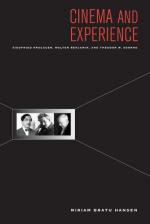|
This section contains 9,022 words (approx. 31 pages at 300 words per page) |

|
SOURCE: “Historical Dialectics and the Autonomy of Art in Adorno's Ästhetische Theorie,” in Journal of Aesthetics and Art Criticism, Vol. 50, No. 3, Summer, 1992, pp. 183-95.
In the following essay, Harding argues that Adorno's thesis in Ästhetische Theorie is based on a notion of historical dialectics.
As Peter Hohendahl has noted, the posthumous publication of Adorno's Ästhetische Theorie in 1970 disappointed many who expected that it would provide a materialist aesthetic which would cultivate praxis.1 The Left, who dismissed the work “out of hand,” maintained that, though anti-capitalist, the text advocated an anachronistic cultural elitism.2 After Hohendahl (re)constructs the historical context in which Adorno's text was so negatively received, he suggests that the time has come (1981; 1991) to reassess the Ästhetische Theorie. Interestingly, while implying that the apparent flexibility of German society in the 1970s produced an inadequate analysis of Adorno's final work, Hohendahl's reappraisal still embraces the cornerstone of that...
|
This section contains 9,022 words (approx. 31 pages at 300 words per page) |

|


